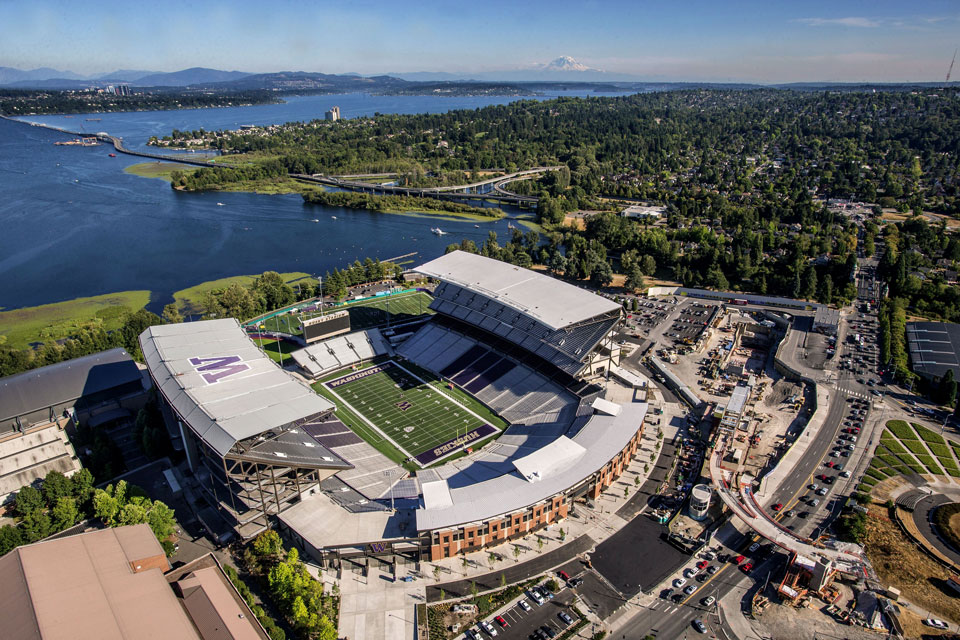
Dean Rutz / The Seattle Times
An aerial image of the new Husky Stadium, which has kept through its transition the elements that have made it one of the most iconic venues in college sports since it was built in 1920: the views of Lake Washington and the Cascade and Olympic mountains.

UW HUSKIES
WSU COUGARS
A chain-link fence decorated in barbed wire protected the east side of Husky Stadium when Jim Lambright made his first visit to the University of Washington football field in the fall of 1957.
Lambright, a sophomore at Everett High School, went to the game with a couple buddies but without tickets. They soon encountered the chain-link fence and, as if sneaking past a gritty offensive tackle, they maneuvered around a small opening in the barbed wire and arrived inside the stadium.
Fifty-six years later, after a distinguished career at UW as a player and coach, Lambright, 71, can’t recall the opponent or the score that day. But he knew the Huskies won, and he knew he was hooked.
“I remember looking around, being big-eyed, mouth open,” Lambright said. “It was unbelievable.”
He fully expects everyone heading into the new, $280 million Husky Stadium to have a similar reaction when the facility formally reopens at 5 p.m. Saturday, two hours before the Huskies kick off the 2013 season against Boise State.
The barbed wire is gone, and so too is virtually everything else that was, at least literally, connected to the stadium on Lambright’s first visit. What remains is what has made it one of the most iconic venues in college sports since it was built for $600,000 in 1920: the views of Lake Washington and the Cascade and Olympic mountains.
Just as important for fans, the potential of winning football remains, too. More than ever, fans could have a bigger role in that.

1920-1936
Husky Stadium has undergone four major renovations in its history, changing from a small 30,000-capacity bowl in 1920, to one of the nation's most iconic college football stadiums. The photo below shows the stadium on opening day, Nov. 27, 1920, when the Huskies lost to Dartmouth, 28-7. Back then, the stadium was called Washington Field. Tickets cost $1.
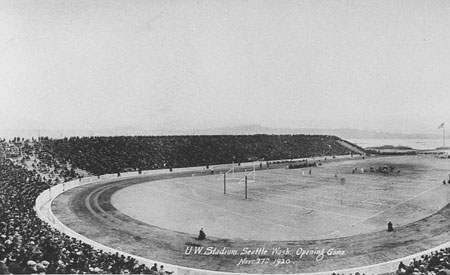
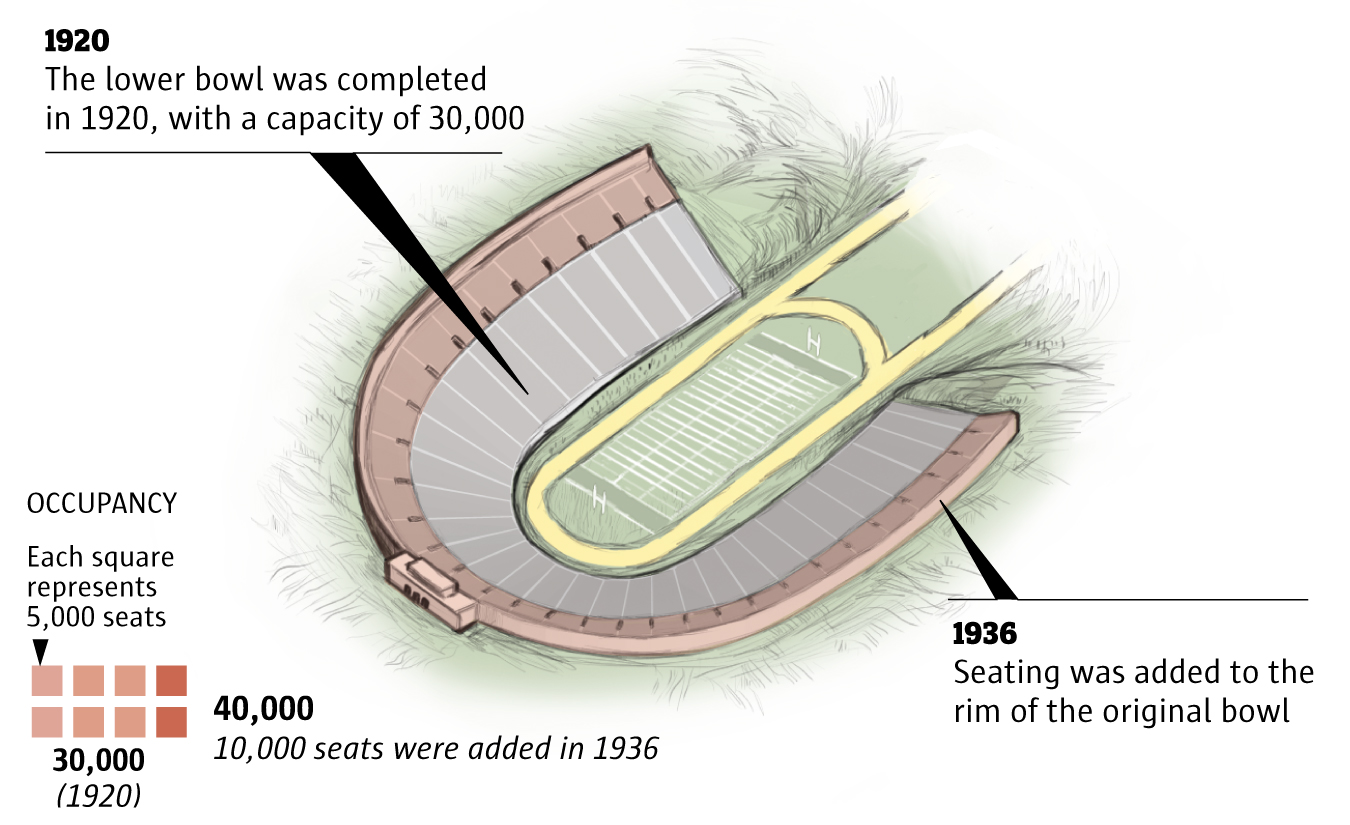
Seattle Times File, 1920
Lazaro Gamio / The Seattle Times
1950-1968
The south grandstand is under construction in this view from the ticket booths on July 2, 1950.
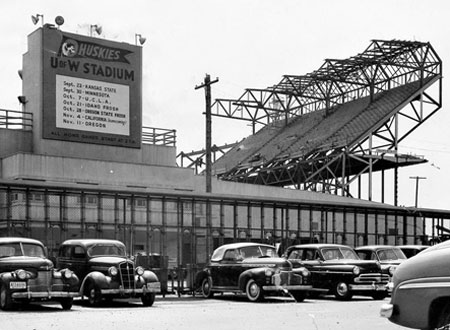
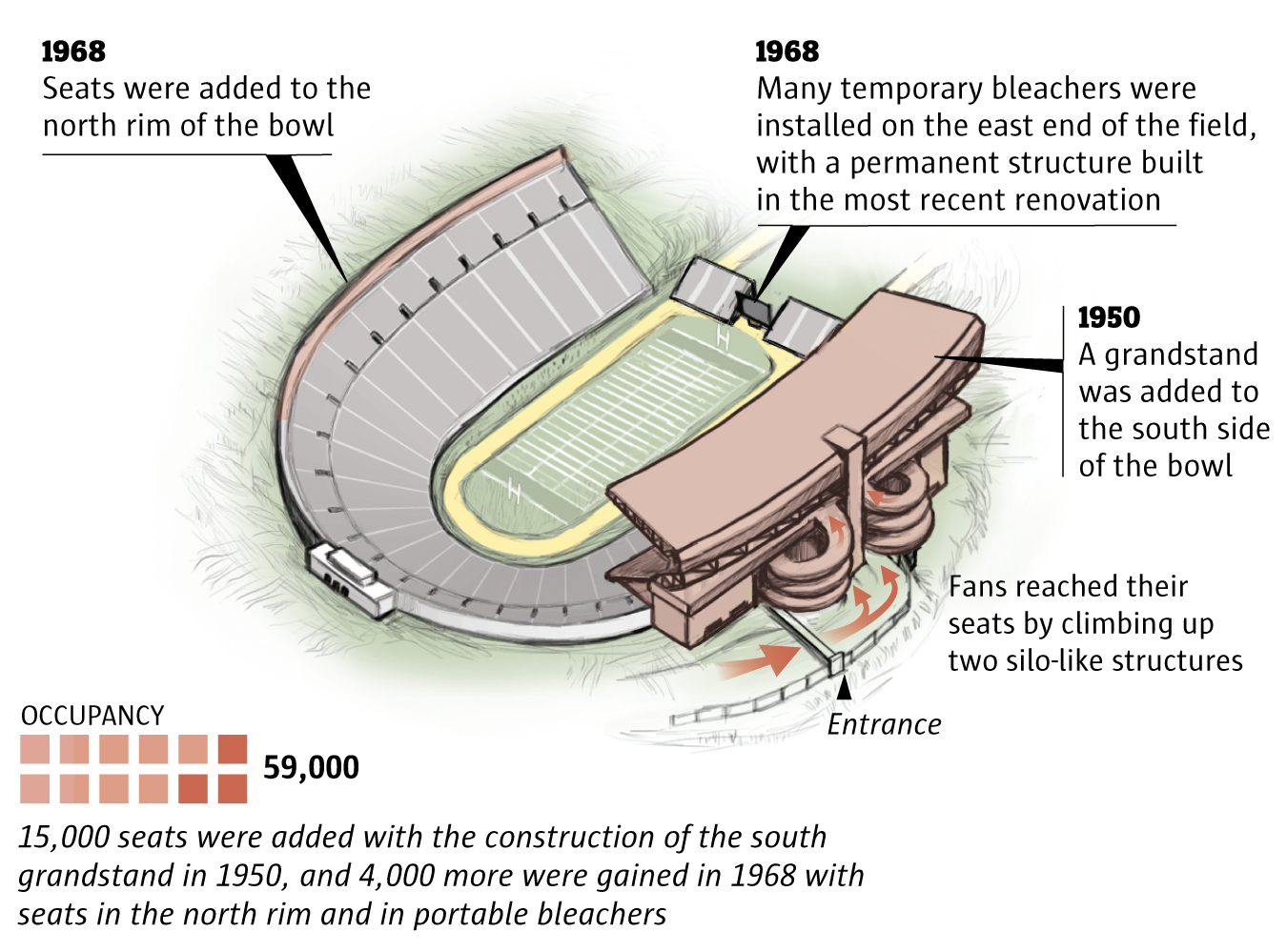
Royal Crooks / The Seattle Times, 1950
Lazaro Gamio / The Seattle Times
1987-2011
The north grandstand of Husky Stadium collapsed in 1987 while it was under construction.
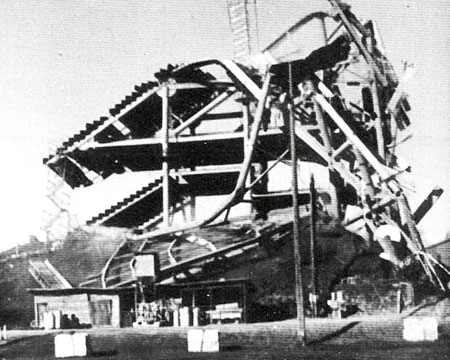
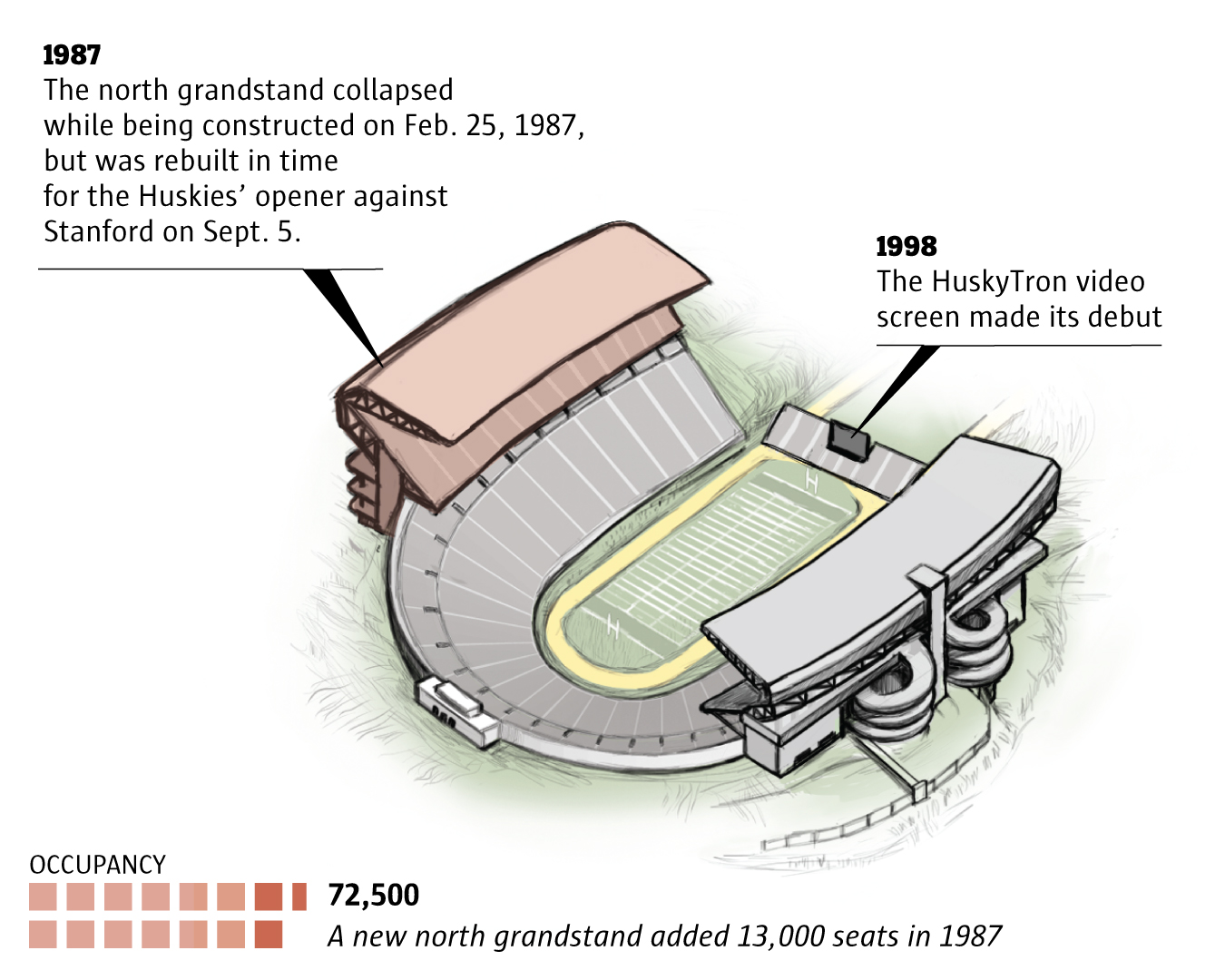
John Stamets / The Associated Press, 1987
Lazaro Gamio / The Seattle Times

Lower field, closer seats
With the removal of the track surrounding the field, seats are dramatically closer to the field.

Stadium noise
Noise from cheering fans bounces inside the grandstands
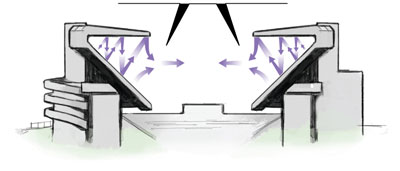
Lambright will be there Saturday night; no way would he miss it. He has a premium seat in the new south-side stands, but he won’t be sitting in it. Instead, after securing a field pass — no sneaky maneuvers needed this time — he’ll watch from the UW sideline.
“I like being where all the action is,” he said.
Some 70,000 other fans will be much, much closer to the action, too. The most noticeable change to the stadium will be the removal of the track that had separated fans from the field. The field has been lowered about 4 feet, and the separation from fans is almost nonexistent now; the corners of the west end zone are just 20 feet from the base of the stands on that end, and at the 50-yard line the field is just 48 feet from the stands. All of which will make the game days a more intimate experience for fans, UW athletic director Scott Woodward said.
The vintage overhanging roofs already gave the Huskies home-field advantage; crowd noise couldn’t easily escape, bouncing off the bottom of the roof and back toward the field.
“Now, with the proximity of the fans to the field, I can imagine it’s only going to be even louder,” UW coach Steve Sarkisian said.
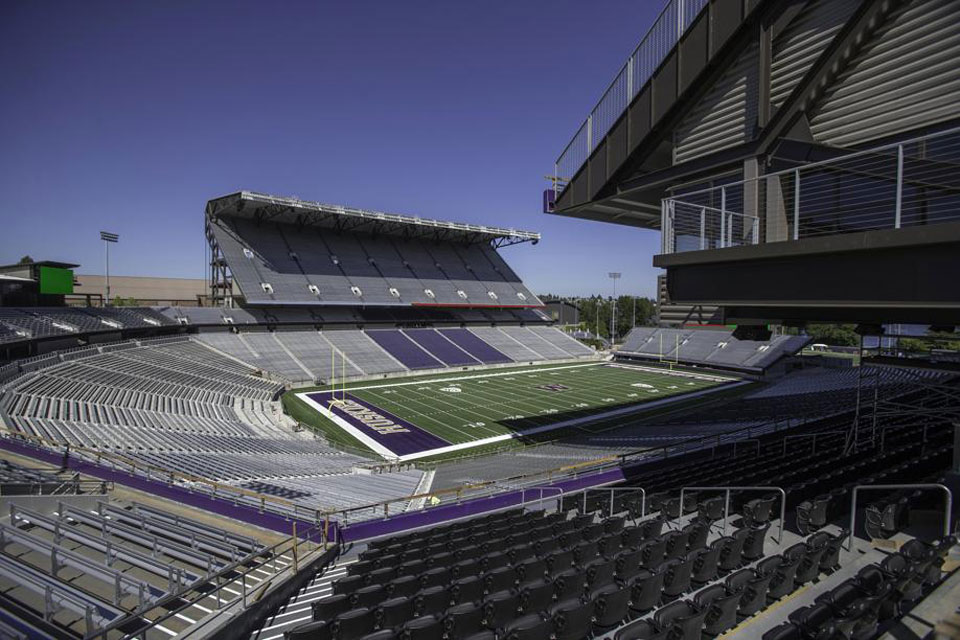
Dean Rutz / The Seattle Times
Fans will be closer to the field now, and the corners of the west end zone are just 20 feet from the base of the stands.
Financing construction
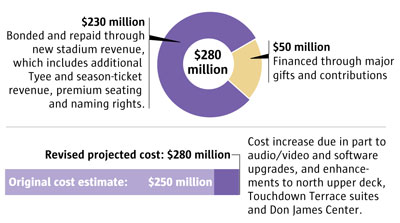
The stadium should provide other significant advantages, both in the short- and long-term.
The revenues the stadium is expected to generate should help the UW athletic department keep up with rivals in the ever-ballooning budgets of major college football programs.
“Football is 85 percent of our revenue and obviously this football stadium is the goose laying the golden egg,” said Woodward, who oversees a department that is projected to generate $95.6 million in revenues for 2013-14.
“I think this puts us in a very nice, competitive position compared to all our BCS counterparts,” he added.
The two-story 83,000-square-foot football operations center, built in as part of the west end of the stadium, offers ample space for players and coaches to train, study, recover and relax. The buildings’ amenities — from a hot tub to a two-seat barber’s room adjacent to the locker room shaped like a “W” — should also help with the all-important goal of attracting the attention of high-profile recruits.
Across the hall from the locker room, there’s a small, glass-encased “fitting room” that will feature the latest uniform designs for recruits to see. Sarkisian’s office, located on the second floor, is the penthouse suite, with a fireplace, views of the field and lake; the coaches’ locker room on the bottom floor features a steam room and a sauna.
“When recruits come in here, I don’t know where else they’re going to go in the country and see better,” Sarkisian said.

93
Number of luxury and patio suites
250
Peak number of workers on site during construction
36,000
Number of cubic yards of concrete in the new stadium

More legroom
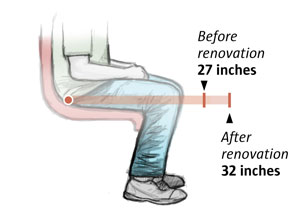
In designing the new stadium, UW faced paradoxical demands from fans and alumni: change it all, they said, but don’t change too much.
Mission accomplished, Woodward said.
“You wanted the old tradition of Husky Stadium, but you wanted it in a modern facility,” he said. “And that’s a hard thing to do, but I think the contractors and the architects and developers delivered just that. … I’m proud of it, and I think fans are going to very pleased.”
Before kickoff, UW players and coaches will continue to make the traditional march out of the tunnel in the northwest corner of the stadium. The difference now is — with the new locker room located in the bottom floor of the football operations center, and not in Hec Edmundson Pavilion — the trek from the tunnel to the field is only about 100 feet, roughly a quarter of what it was before.
On a related note, the visitors’ locker room, previously located around the corner from UW’s, has been moved to the other side of the stadium. Opponents will now enter and exit the field from the southeast corner — a change that, Lambright said, will eliminate some of the fights that broke out from time to time between opposing players having to mingle in the tunnel.
Inside your new Husky Stadium
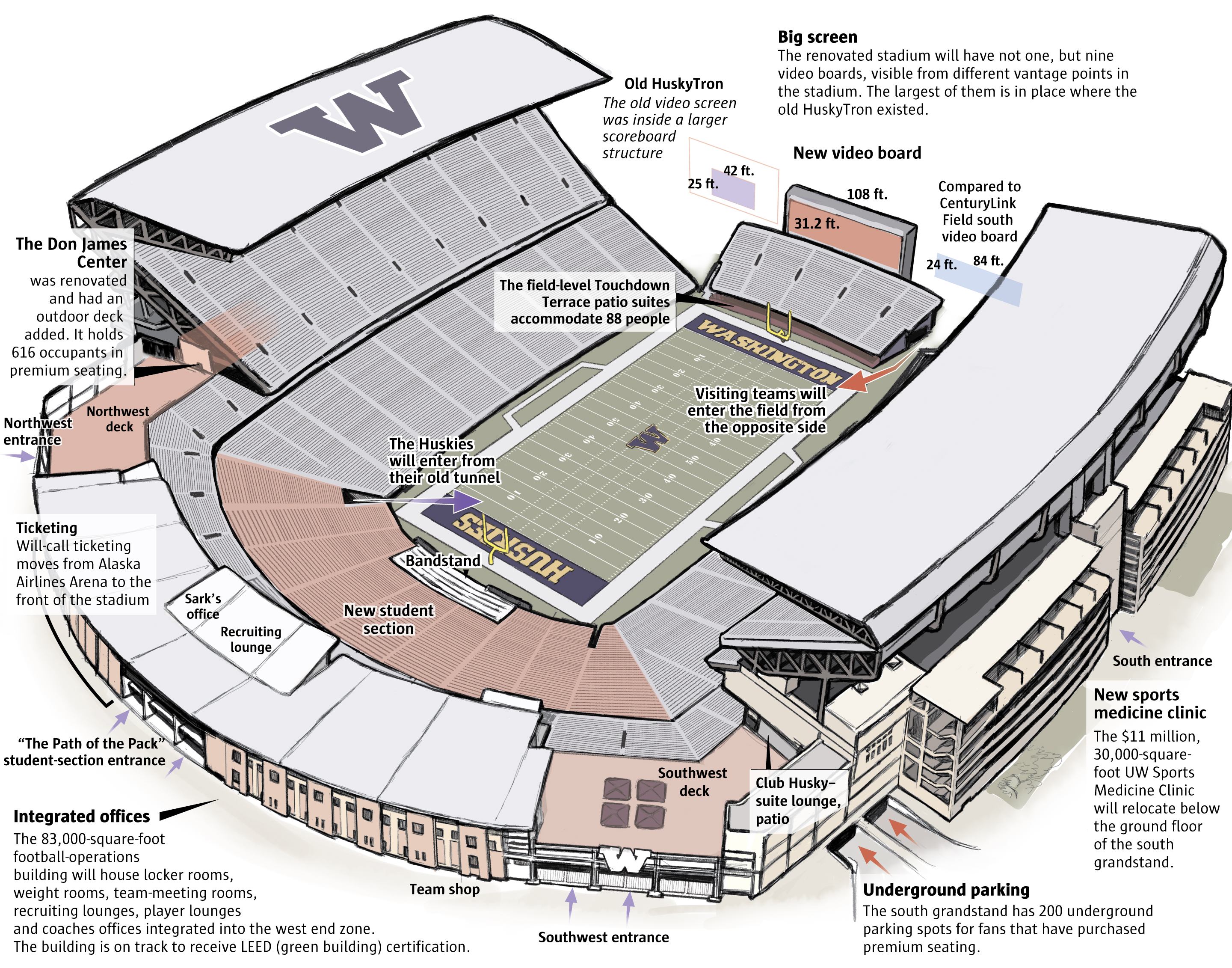
Lazaro Gamio / The Seattle Times
Number of toilets
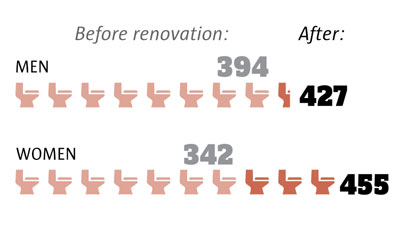
Fans will take notice of the permanent stands in the east bleachers, and the high-definition video board rising above, with “HUSKY STADIUM” purple letters marking its place across the top. Below all that are a dozen field-level suites, much like those at the Seahawks’ CenturyLink Field. (Those weren’t part of the original $250 million budget, but Woodward said the field suites are “value-added” pieces that contributed to the cost rising about $30 million.)
The north-side roof and upper-deck bleachers are all that remains of the old stadium, but they did get a face-lift with new paint and new speakers, Woodward said. In all, UW says there are more than 700 flat-screen televisions in the stadium; that includes 42-inch TVs in the concourses and 55-inch TVs in the luxury suites.
Concession stands sell $4 “jumbo” hot dogs, and for the hungriest Dawg fans it’s $3 more for chili with cheese on top. From the concourse toward the field, fans will walk under a 3-foot by 3-foot “W” backlit in white and surrounded by dark finished pine from British Columbia, giving you the feel as if you’re walking into a living room, not a football game.
Including suites, there are 447 bathrooms in all and — yippee! — no more troughs in the men’s restrooms. Lambright chuckled as he recalled the days when athletic department staffers had to walk around to the stadium restrooms in the winter. The pipes would freeze if the toilets didn’t get flushed regularly, he said.
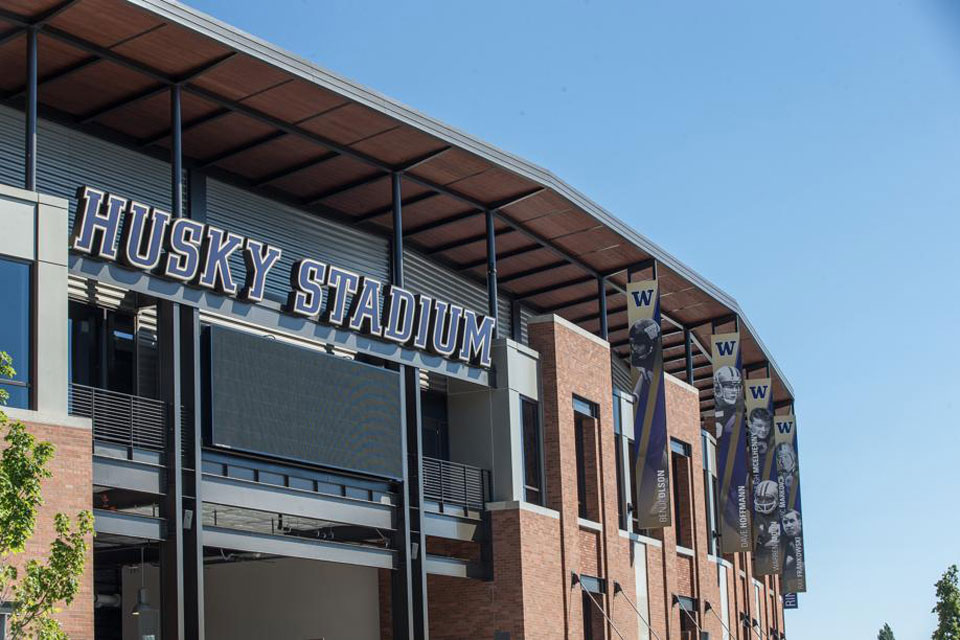
Dean Rutz / The Seattle Times
Finishing touches are being put on renovated Husky Stadium as the opening date is less than a week away.
Indeed, Lambright continues to be linked to Husky Stadium all these years later. Since 2005, he has worked as a team-building consultant for Turner Construction, which in 2010 won the bid to build Husky Stadium. Lambright has served as a go-between for the athletic department and the construction company during the project. There weren’t any major hurdles he heard of throughout the 22-month rebuild, and he’s hoping any hiccups during Saturday’s grand reopening will be only minor.
The one concern he has is the postgame scene. With seats so close now, even ramped-up security might not be enough to stop a flood of fans from going over the 8-foot-tall railing and onto the field in celebration, if it comes to that.
Will the new proximity be too much for crowd-management staff to handle?
“That,” Lambright said, “is a nice problem to have, isn’t it?”
Adam Jude: 206-464-2364 or ajude@seattletimes.com.





